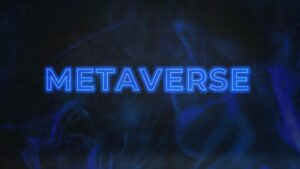Momentálne prázdny: 0,00 €
Time and Material vs Fixed Price: Which to Choose for Your Project?
Content
When you decide to continue the work after the first sprint you can still break the project after a 4-week notice period . Our cooperation with clients is based on the Agile Methodology, which we also use to manage our company. We believe that potential non-payment for two weeks of work is less risky than incorrect evaluation of an innovative product. You have control over the entire process so you know exactly what you’re paying for.

It’s likely that to define the scope, you might be required to pay the developer to do a discovery project. Working with outsourced developers means that there are a few fundamentals that need to be hammered out from the beginning. This is because each project is different in its own regard and throws up a unique set of challenges. You will be paying the service provider on the basis of how much work was carried out. This requires very little involvement since all of the expectations and requirements are transparent and predictable.
Time and Material VS. Fixed Price – the Differences
This way, at the end of the project, you will receive a high-quality product that exactly fits your needs. What’s more, there’s a “set in stone” deadline by which time the client is “guaranteed” to be presented with the ready product. And with a detailed plan including goals and milestones, they can easily track the progress of the project. There’s no need for the client to supervise the project either, so everything sounds clear and predictable.
Any edits, additional testing can affect the end of development. Leadership in the form of requirements’ management, as it not only entails the direction of the product to be built but also bears the responsibility of success or failure of the project. I believe it is self-deceit that this responsibility can be outsourced or concentrated into a short effort before the beginning of the project. Because, believe it or not, this is precisely what I am saying. We have extensive experience in successful project implementation in various areas, and we are ready to help you bring your ideas to life. Those that bring profit quickly or those that are key for the end user?
If the budget leftover is within the estimation range, start the work and be with the team under T&M with every 1 or 2-week delivery. It allows you to estimate the budget needed to build your software solution. The Fixed-Price model is appropriate if you know exactly what software you want at the end, what type of features it should have. If the project is a startup, then it is best to choose Time and Materials. If you just have a regular business project, use the Fixed-price model.

Before signing the contract, it is critical to agree on all stages of the project, as well as the specifics of the technology and development control. This will help you save money on project control approaches. A customer pays a higher rate for senior software developers and a lower for junior ones. Moreover, you can control the amount of time a team spends on a specific task.
Depending on the choice of the model, these elements are being treated differently. The team divides all work into stages, after which you check the work done and make changes if necessary. This concept is appropriate for businesses with modest initiatives, limited finances, and opportunities. Such situations can occur because of errors, inaccuracies, or obsolescence, so the company will need to allocate additional funds for improvements.
Cons of Time & Materials
A time and materials pricing model is similar to apay-as-you-go pricing model, often starting with a set of shared goals, clear requirements, and a ballpark estimate. All these elements can be changed during the project if needed. As a result, you’ve set some general goals but knowing how they will be reached is not as important beforehand.

If you ask for our honest advice, we suggest time and material business model if compared with fixed price. With years of experience, we have seen clients opting for a fixed price model and later asking for changes and ending up paying more than they expected. A fixed price business model is the one where the project scope is complete and asks for project development and completion with a fixed timeline.
The risk is too high
Estimates of the scope of work and project timelines are simply approximations. During T&M, adjustments are frequently made, and the most important thing is the outcome and quality, not the price and terms. An accurate understanding of how much will need to be spent on development. If you have a clear idea of the final product, it will be easier to calculate the cost of technology, timing, and other project resources.
- These two models involve making different assumptions regarding the project and taking different approaches to the software development process.
- Generally, you won’t come across issues when making changes, since you’re only paying for the work that’s actually been done according to your hourly rates.
- Such projects require developing a specific and sufficient subset of features to field-test a product idea to attract early-adopter customers.
- Your company’s strategy probably requires clear deadlines and figures.
- It’s likely that to define the scope, you might be required to pay the developer to do a discovery project.
The Agile Method comes with the Time & Materials model, which means there’s no fixed price and detailed specification in the contract. You pay https://globalcloudteam.com/ only for the hours spent on the project and for the real effects. Of course, we’ll stick to your budget and help you with estimating it.
When choosing time-and-materials models
Now we can take a deeper look at who may profit from each pricing plan, as well as its advantages and disadvantages. This way, the client can expect the final price of the project before it starts. Fixed Price model assumes that the total budget of the project is approved before development starts and stays unchanged during the development process. Such projects require developing a specific and sufficient subset of features to field-test a product idea to attract early-adopter customers. It is the most bare-bones version of a software product that exists and solves a business need. Typically, this is a one-time job with no provision for future improvements or maintenance.
Projects developed with Time & Materials help customers to build vibrant and complete applications that satisfy both the customer and its clients. With Time and Materials, we can improve the project specification during the development process by adding new functions and features, which makes the solution much more competitive. In the T&M model our common goal is to create the best software that will not exceed certain budget assumptions.

The T&M paradigm is best suited for long-term projects or those that require frequent changes in conditions. Furthermore, this technique is excellent for projects where there is no defined amount of work and where development methods must be flexible. If the developers know the exact information about the project, they can easily calculate a detailed work plan and time frame for the project.
So… what’s so great about T&M?
If a vendor is falling behind a delivery schedule, the team can be ramped up, or development speed increased in other ways, if necessary, to meet the delivery deadlines. However, the same can be achieved with a T&M contract when working towards a milestone in a release or delivery fixed price vs time and material plan. After all, a T&M contract often only defines the daily rate and total budget with sufficient flexibility in budget burn rate while working towards delivery goals. The most prominent alternative to fixed price is the Time & Material, or simply T&M, type of contract.
Time And Material Vs Fixed Price Engagement Models
The image depicts a power icon, giving energy and empowerment to the client’s goals. And this can mess up everything, forcing you back to the drawing board. With the specified total price and the deadline, you won’t have any unpleasant surprises. You want your digital solution to respond to ever-changing market needs and industry demands quickly.
After the meeting, they start planning the second sprint with an eye on the milestones and the backlog. This way the vendor enriches the original specification with the new features at every sprint, which makes our product more flexible and satisfies the market needs. Before the project starts business analysts develop the project specification, but after the spec is ready they divide the development process into several milestones. The client does not have to specify the entire project scope and set of requirements initially.
Minimum Viable Product is an application that can solve the specific business goal, although it may not work smoothly or have the pretty user interface. For example, we are often asked to develop MVPs to prove a particular idea or hypothesis. The customer knows what exactly he wants, so we could provide the explicit specification and proof of the idea for a fixed cost and known budget. With Fixed Price agreement all the project features are well-documented so that they can be quickly passed down to the development team without additional approvals with the customer.
Multiple changes in the initial project’s scope are possible. If you are interested in the development of a custom solution – send us the message and we’ll schedule a talk about it. Then organizations can have a clear insight into what is most suitable for their outsourcing projects. Two bold lines represent the synergy of client and company, with dual perspectives merging together. The circle creates unity and cohesion within the client-consultant relationship.
While involving the software development firm, you sign an agreement and the billing contract. There are several financial models of cooperation with IT companies. To choose the right one, you ought to pay attention to the opportunities offered by the specific pricing model. Both cooperation model types have their advantages and drawbacks, so each one works best for different types of projects. If you have a small project with detailed guidelines or when you are sure that no changes will be needed, a Fixed-Price contract is a good option.
Our operating model is based on the Agile Methodology and by applying its premises we were able to develop software in the way that provides flexibility and supports partnership during the whole process. The most significant advantage of a T&M cooperation model over Fixed-Price models is that you retain much more control over the project. If you don’t yet have a detailed vision of the product as a whole, the Time and Material model is also a great pick. Now, it comes to the most critical part – picking a cooperation model.










